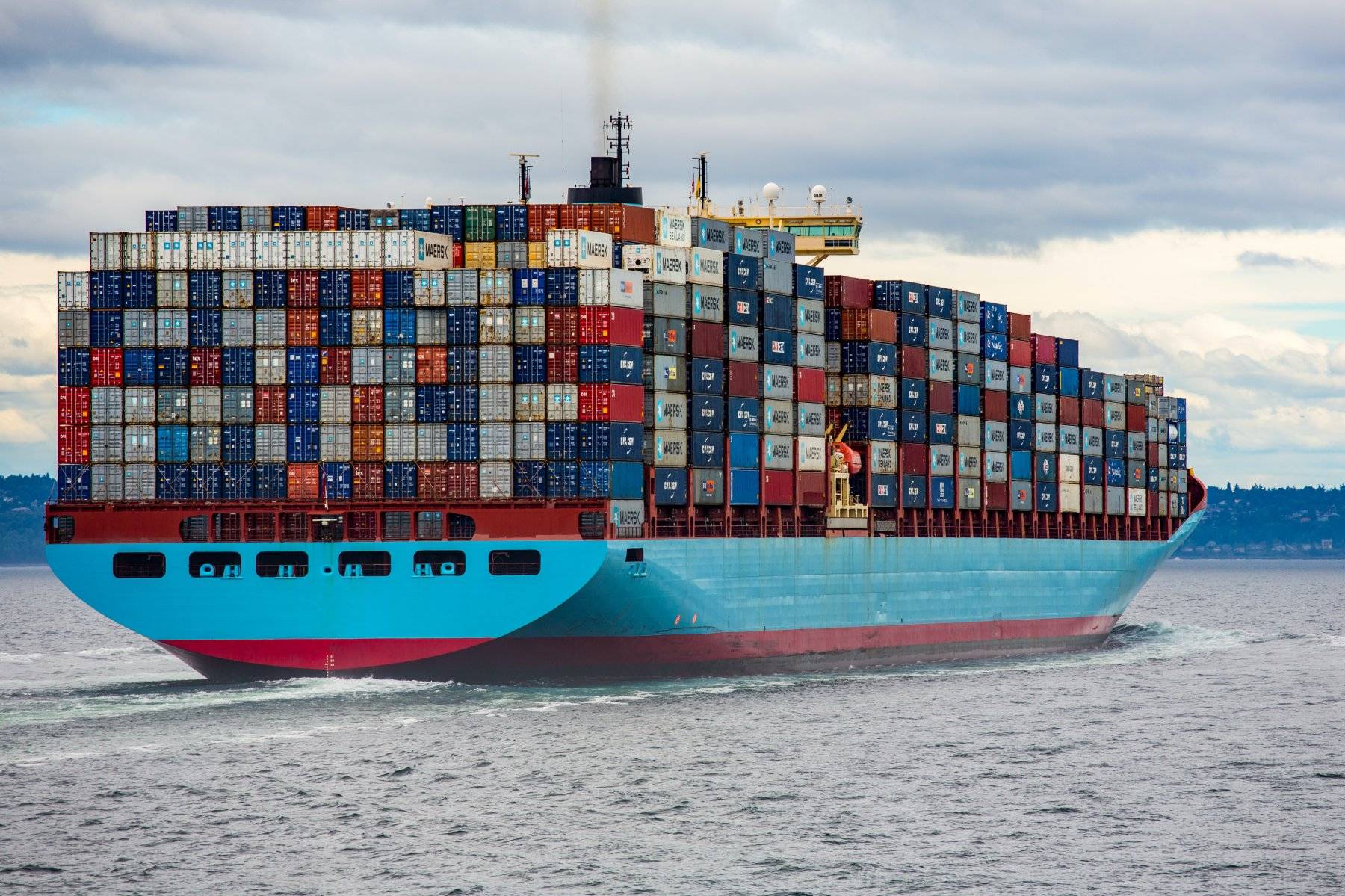International shipping is a multi-faceted field, and naturally, in an industry that size, issues will crop up from time to time. Technological advancement has come a long way in helping to overcome these issues. These developments have not only streamlined logistics operations but have also opened up new possibilities for efficient and sustainable shipping practices. For student researchers, exploring the impact of these innovations can provide valuable insights into the future of international shipping and supply chain management.
It's not uncommon for students to need help with a research paper online, and writing research papers helper can be useful with complex topics. Here, we'll delve into some of the technological innovations that have changed the face of international shipping so now as a student researcher you can organize your writing ideas on it and appreciate the industry as a whole.
Innovations and Technologies in International Shipping
Drone Delivery

Drone delivery has emerged as a disruptive innovation in the realm of international shipping, offering a novel approach to last-mile delivery. Drones, crewless aerial vehicles (UAVs) equipped with advanced navigation systems and cargo compartments, can potentially revolutionize the logistics landscape. They offer numerous benefits, including increased speed, cost-effectiveness, and accessibility to remote or difficult-to-reach areas.
Amazon has already started using drone delivery in some areas. Recent research into drone delivery shows that it is most efficient when used in a hybrid model, with trucks taking up the slack from drones. There have also been studies into using UAVs to deliver medical supplies. In January 2022, a drone delivering medical supplies to a hospital in Sweden helped save a man's life.
Hyperloop

Mixed opinions have greeted the announcement of the hyperloop as a transportation solution. Hyperloop transportation presents a revolutionary concept that holds the potential to transform long-distance shipping. This futuristic mode of transportation involves high-speed pods traveling through low-pressure tubes, enabling swift and efficient cargo transportation. The advantages of hyperloop technology include remarkable speed, reduced carbon footprint, and enhanced connectivity between regions.
Since no real hyperloop has been built and used commercially, we don't have concrete data on its operation. However, a hypothetical exploration of hyperloop transportation in shipping suggests that the shared value of such a technology shouldn't be overlooked. This technology may be closer than you think, as Virgin Hyperloop (now Hyperloop One) ran its first test with actual passengers in 2020. Seeing hyperloop shipping is simply a matter of time now.
Autonomous Ships

Advancements in autonomous shipping have ushered in a new era of uncrewed vessels equipped with sophisticated navigation and cargo management technology. Autonomous ships offer benefits such as enhanced safety, reduced labor costs, and optimized logistics operations. Recent research suggests that autonomous ships have a much bigger impact on safety when they are used to replace crew as opposed to using autonomous navigation on a fully-staffed ship.
Explorations into whether autonomous ships can make for more efficient short-sea shipping show a significant improvement over traditional short-sea shipping. Despite this, there are legal and jurisdictional issues regarding autonomous ships before they can be properly used in shipping. With time, these issues will work themselves out.
Blockchain in Supply Chain

The blockchain has been associated with cryptocurrency, but this technology has a more far-reaching impact than many people suspect. A blockchain is an immutable record of data that can be used for various things in shipping and supply-chain management. In the case of international shipping, blockchain can be used for transparency, traceability, and security.
There has been much research by companies on how to incorporate the blockchain into their businesses with varied success. Multiple case-study analysis has also shown that several factors affect the efficiency and evolution of these blockchain models. With time, these models could evolve into something even more impressive and useful in working out supply chain issues.
Internet of Things (IoT)
The Internet of Things is not that well-known outside of logistics and supply chain management, but it is advantageous. Real-time monitoring of in-transit packages and data exchange between parcels and ships can offer better insight into how products get from their source to their destination. Moreover, this cross-exchange of information can lead to more efficient deliveries, fewer breakdowns, and unsatisfied customers at the end of the supply chain.
IoT utilizes small internet-connected transmitters that can connect to others in the vicinity. This connectivity gives a picture of what is currently around the package and the conditions the box is in (temperature, pressure, moisture, speed, etc.). Yet despite this usefulness, many companies are hesitant to adopt IoT for their supply chain management, mainly because they aren't aware of the proofs-of-concept of the idea that have already been implemented. IoT has promise in a wide range of industries. International shipping is one that could benefit immensely if the technology were to be more widely adopted.
Augmented Reality (AR) in Last-Mile Delivery

Many people may already know about augmented reality since it's become a fixture in many mobile games today, but it can be useful in other ways. Augmented Reality has emerged as a transformative technology in the realm of last-mile delivery. By overlaying virtual information in the real-world environment, AR improves the efficiency and accuracy of delivery processes. It assists in navigation, package identification, and delivery verification, enhancing the overall customer experience.
AR for last-mile delivery could potentially transform the entire supply chain, making for more efficient delivery, even with long-distance shipping (such as international shipping). Investment into delivery droids for use with AR for last-mile delivery increases the bottom line and is good for the environment. However, these systems have shown some issues in safety and equity during delivery.
Green Shipping

Green shipping is the push to incorporate more environmentally friendly practices into international shipping for the benefit of all. It encompasses a range of initiatives to reduce maritime transportation's environmental impact. Experienced experts assist you in applying these innovations - from alternative fuels to emission reduction strategies and energy-efficient ship designs - that are revolutionizing the industry. Ask us for assistance with your logistics needs to meet international green shipping standards.
In a case study on Green Shipping, KPMG suggests that most large companies in the shipping industry are looking at alternative fuels to conform with governmental policies on reduced emissions. Some studies delve into what sustainable shipping should look like and propose conceptual frameworks for evaluating the success of these measures.
3D Printing in Supply Chain

There have been few technologies that have become as disruptive to manufacturing as 3D printing. Now, users can design and develop their own prototypes from the comfort of their own homes. But what impact does this have on international shipping? Also known as additive manufacturing, 3D printing enables the production of objects by layering materials based on digital designs. This technology offers advantages such as reduced lead times, customized production, and decentralized manufacturing.
While 3D printing does show much promise commercially, some studies suggest that it has not been properly integrated into the supply chain. Companies such as Shell have adopted 3D printing to speed up delivery of spare parts to their remote locations, increasing their efficiency but cutting out the need for shipping altogether. Whether this is a positive or a negative remains to be seen. Still, its impact on international shipping is undeniable.
What We Can Expect
Innovations and technological advancements in international shipping have transformed the industry, offering new possibilities for efficiency, sustainability, and improved supply chain management. Student researchers have a lot of information to digest regarding these technologies’ impact on international shipping. Some of them can bring about a change in how businesses see the supply chain as a whole. Others can help with predictive supply solutions. Yet others may be more disruptive, leading to less need for international supply chains by keeping supply locally. Whatever the future holds, these exciting and brilliant innovations have forever changed how international shipping works.


